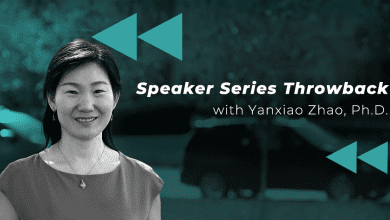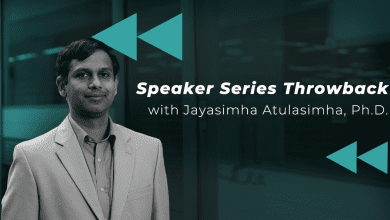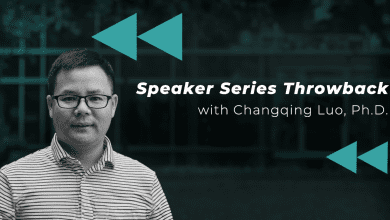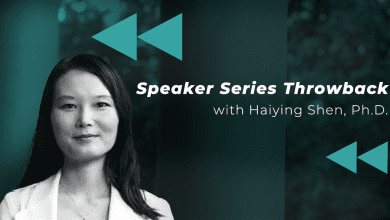Published on 10/31/2024

The lines between our physical and digital worlds are blurring, and with that shift comes complex challenges—how can we protect our data, privacy, and identities while fostering innovation? The 2024 CyberArts Exhibit, presented by the Commonwealth Cyber Initiative (CCI) at the Torpedo Factory Art Center in Alexandria from October 5, 2024, to January 19, 2025, offers a new way of understanding these challenges by placing art and cybersecurity in conversation. Through thought-provoking installations, performances, and multimedia works, the exhibit explores how creativity and technology can jointly shape our future.
The exhibit asks us to look beyond technical jargon and see cybersecurity as more than just algorithms or encryption. It’s about people—how we interact with digital systems, how they shape our lives, and how they raise questions about control, trust, and identity. In collaboration with artists from Virginia’s leading institutions, CCI is building an experience that humanizes these issues, turning abstract concepts into tangible, emotional, and participatory moments.
“We wanted to challenge both our researchers and the community to look at cybersecurity issues in a completely novel way—a way that teaches us new things about them, by putting them in the context of our lives. Communicating that we are both part of the issues and their solutions..”
— Luiz DaSilva, Ph.D., Executive Director of CCI
From Surveillance to Empathy: Reimagining Technology
One of the featured projects, SentimentVoice, exemplifies this intersection perfectly. It transforms artificial intelligence (AI) technologies commonly used for surveillance into a medium for connection. Through a live virtual reality performance, actors convey stories from immigrant communities while AI analyzes their voices and facial expressions. As these stories unfold in real-time, the AI responds with visual and auditory feedback, blurring the boundary between human emotion and machine perception.
“We wanted to explore the dual nature of AI—how it can be both invasive and transformative, depending on how it’s used. The same technology that monitors emotions can also foster empathy.”
— Semi Ryu, Ph.D., PI on SentimentVoice
This shift—from control to empathy—challenges the narrative that technology is inherently neutral or strictly utilitarian. It’s a call to reconsider how we use digital tools: Will AI and cybersecurity reinforce systems of surveillance, or can they be reimagined to serve human needs, such as empathy, storytelling, and connection? SentimentVoice opens up that question, inviting audience members to be participants in the conversation rather than passive observers.
Art as a Tool for Digital Literacy and Critical Thinking
In a world where misinformation spreads quickly, and phishing scams exploit vulnerabilities, digital literacy is crucial. Yet many of us feel overwhelmed by the complexities of cybersecurity. This is where art becomes an invaluable tool—it translates difficult concepts into relatable, interactive experiences.
Visitors will encounter installations such as a project that uses moiré patterns to illustrate the dangers of hidden information, and “This Is Not a Scam!!,” a theater performance based on real victim interviews that explores strategies to combat online fraud. These works make abstract threats visible, inviting audiences to engage with cybersecurity issues in ways that are visceral and memorable.
“Theater is by definition a convening of people at the same place at the same time,” said Susanna Rinehart, Ph.D., an associate professor in the Virginia Tech School of Performing Arts, who is co-directing This Is Not a Scam!! with Mason Rosenthal, Ph.D. an instructor in the school. “For a circumstance that is so isolating, it’s hard to reach people in other ways because there are so many forces at work that mean people suffer in silence.”
Bridging Technical and Creative Worlds
The CyberArts Exhibit grew from a call for proposals issued by CCI, which brought together researchers from Virginia universities like Virginia Tech, VCU, and George Mason University with artists and designers. This interdisciplinary collaboration fosters fresh perspectives. When artists confront cybersecurity researchers with imaginative questions, new solutions can emerge. And when technologists view their work through the lens of art, they begin to think beyond functionality and efficiency, contemplating how technology impacts society on an emotional and ethical level.
“Appealing to emotions through reactive VR settings is something that most researchers don’t think about, but at the same time it’s a wonderful visual disseminator of the work that we are doing to the wider public, which is very necessary, since cybersecurity is something that should matter to everybody.”
—Joao Santos, Ph.D, Researcher at the CCI HUB
Designing the Future: Creativity Meets Security
The intersection of art and cybersecurity is not just an exercise in aesthetics—it’s essential for shaping the future. As AI, IoT, and big data continue to grow, we need new ways to explore questions of agency, privacy, and ethics. Art opens doors to possibilities that technology alone cannot imagine. It encourages us to ask: What kind of digital world do we want to build? Who benefits from the technologies we create? How can we ensure that the systems we rely on serve us, not control us?
This exhibit helps us reflect on these questions by presenting cybersecurity not as a technical discipline, but as an evolving conversation—one that requires not only expertise but also imagination, empathy, and creativity.
The 2024 CyberArts Exhibit at the Torpedo Factory Art Center in Alexandria invites visitors to experience the intersection of art and cybersecurity firsthand. Whether you are captivated by an installation that reveals how AI “sees” people or drawn to discarded smartphones that expose the digital debris of our lives, the exhibit promises to provoke thought and inspire conversation.
Don’t miss this chance to explore how art and technology together can unlock new ways of thinking about our digital future. The exhibit is open now through January 19, 2025. Admission is free, and the questions you leave with might be as important as the art you see.



